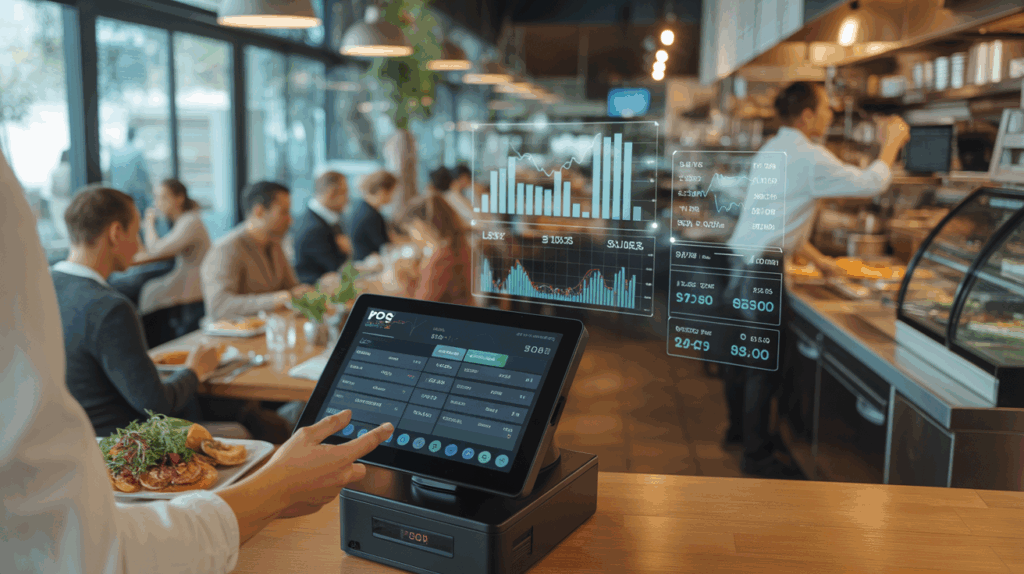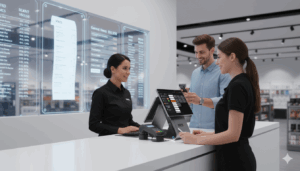Look, I’m not a tech guy. I flip burgers, manage servers, and try to keep customers happy. But when I switched to PAYS POS last year, something crazy happened – I actually started understanding my business numbers for the first time in fifteen years.
You know that feeling when you’re running blind? Making guesses about what’s working and what isn’t? That was me every single day until I figured out what makes PAYS different from every other system I’ve used.

What Real-Time Actually Means
Most POS systems say they give you “real-time” reports. Yeah right. Real-time means when someone orders a cheeseburger at 2:15 PM, that sale shows up in my reports at 2:15 PM. Not at the end of the day. Right now.
My old system? I had to wait until close, run end-of-day reports, then pray the numbers made sense. Half the time they didn’t. Orders would disappear, sales wouldn’t match what we collected.
With PAYS, I check my phone during lunch rush and see exactly how much we’ve made today. Not yesterday’s numbers. Today’s numbers, updated every minute.
How It Actually Stores Everything
Here’s the part that matters for restaurant people like us. Most old POS systems collect data in chunks. They grab information, then dump it all together later. That’s why you get weird gaps where sales disappear.
PAYS does something different. Every transaction gets saved the second it happens. Not held until later. Immediately.
Think of it like this: old systems are like writing orders on scraps of paper, then trying to organize them at closing time. PAYS is like having everything written in one book as it happens, in perfect order.
When your dinner rush hits and you’re doing fifty orders in an hour, you need to know what’s happening right now, not three hours ago.
Why Other Systems Mess Up
Most POS companies build software like they’re making it for offices, not restaurants. Office stuff can wait a few minutes to update. Restaurant stuff can’t.
When your system crashes during dinner service and you restart it, what happens to orders that were “processing”? With most systems, they’re gone. Just vanished.
PAYS saves everything instantly. So if something goes wrong – power outage, system restart, whatever – nothing disappears.
I learned this last month. We lost power for thirty seconds during busy Friday night. Old system would’ve lost twenty minutes of orders. PAYS? Every transaction was still there when we came back online.
The Magic Behind Menu Tracking
This part blew my mind. You know how you wonder which menu items actually make money? Most systems tell you what sold, but not the whole story.
PAYS tracks every ingredient in real-time. When someone orders a bacon cheeseburger with extra pickles, the system knows exactly what that costs to make, what you charged, and how much profit you made. Not approximately. Exactly.
At any moment, I can see which items make money and which ones kill my profits.
Last week I found out our “signature” pasta dish was losing money on every sale. Ingredients cost more than what we charged. Been selling it for two years without knowing. Fixed the price the next day
Handling Rush Hour Without Breaking
You know what kills most POS systems? Volume. When you go from ten customers an hour to fifty customers an hour, everything slows down or crashes.
PAYS was built for restaurant rush hours. It doesn’t get slower when you get busier. It handles transaction number one at the same speed as transaction number one hundred.
My buddy Mike runs this crazy busy breakfast spot downtown. Weekend mornings are insane – line out the door for three hours straight. His old system crashed every Saturday around 9 AM. With PAYS? Handles the rush like nothing.
The work gets spread across multiple systems. When orders pile up, more power kicks in automatically.
Real Numbers That Help
Here’s what I love about PAYS reporting. The numbers make sense and help me run my business better.
Want your busiest hour today? It’s right there. Which server sold the most appetizers this week? Two clicks. Is that new menu item working? The data’s waiting.
But it’s not just sales numbers. The system tracks stuff that’s super useful. Like how long tables stay occupied, which payment methods customers prefer, what time people order desserts.
Found out people who pay with credit cards order 40% more appetizers than cash customers. Started training servers to mention appetizers when they see someone pull out a card. Appetizer sales went up 25% in two weeks.
The Inventory Connection
This is where PAYS gets really smart. Most systems track sales and inventory separately, so you never know if your numbers match until you do physical counts.
PAYS connects everything. When someone orders chicken wings, the system subtracts wings from inventory, updates food costs, and calculates profit margins. All in real-time.
I always know exactly how much food I have, what it’s worth, and when to reorder. No more running out of popular items during busy nights. No more ordering too much food that goes bad.
The system learns your patterns. It knows you sell more wings on Sundays, more soup when it’s cold. So it predicts what you’ll need and when.
The Simple Truth
Look, I’m not trying to sell you anything. I’m sharing what I learned because I wish someone had told me this years ago.
The secrets behind PAYS real-time reporting aren’t complicated. Store everything immediately instead of later. Connect all your systems. Handle busy times without slowing down. Show useful information that makes sense.
Sounds simple, right? But most POS companies can’t figure this out.
If you’re tired of running your restaurant blind, tired of numbers that don’t add up, tired of finding out about problems days later, maybe look at how your POS system actually works.
When your reporting works right, everything gets easier. You make better decisions, waste less money, and understand what’s happening in your business. That’s worth more than any fancy feature.



